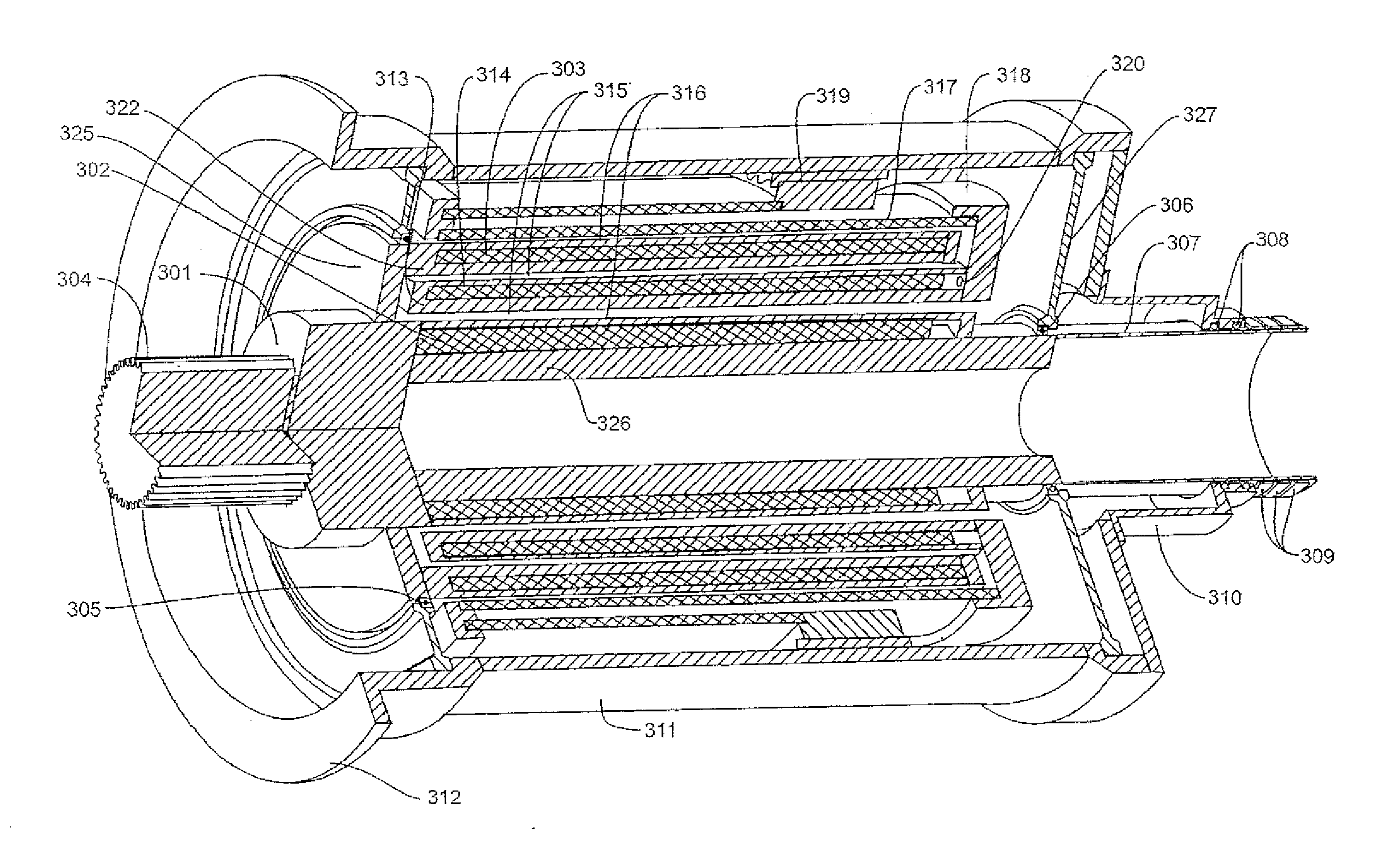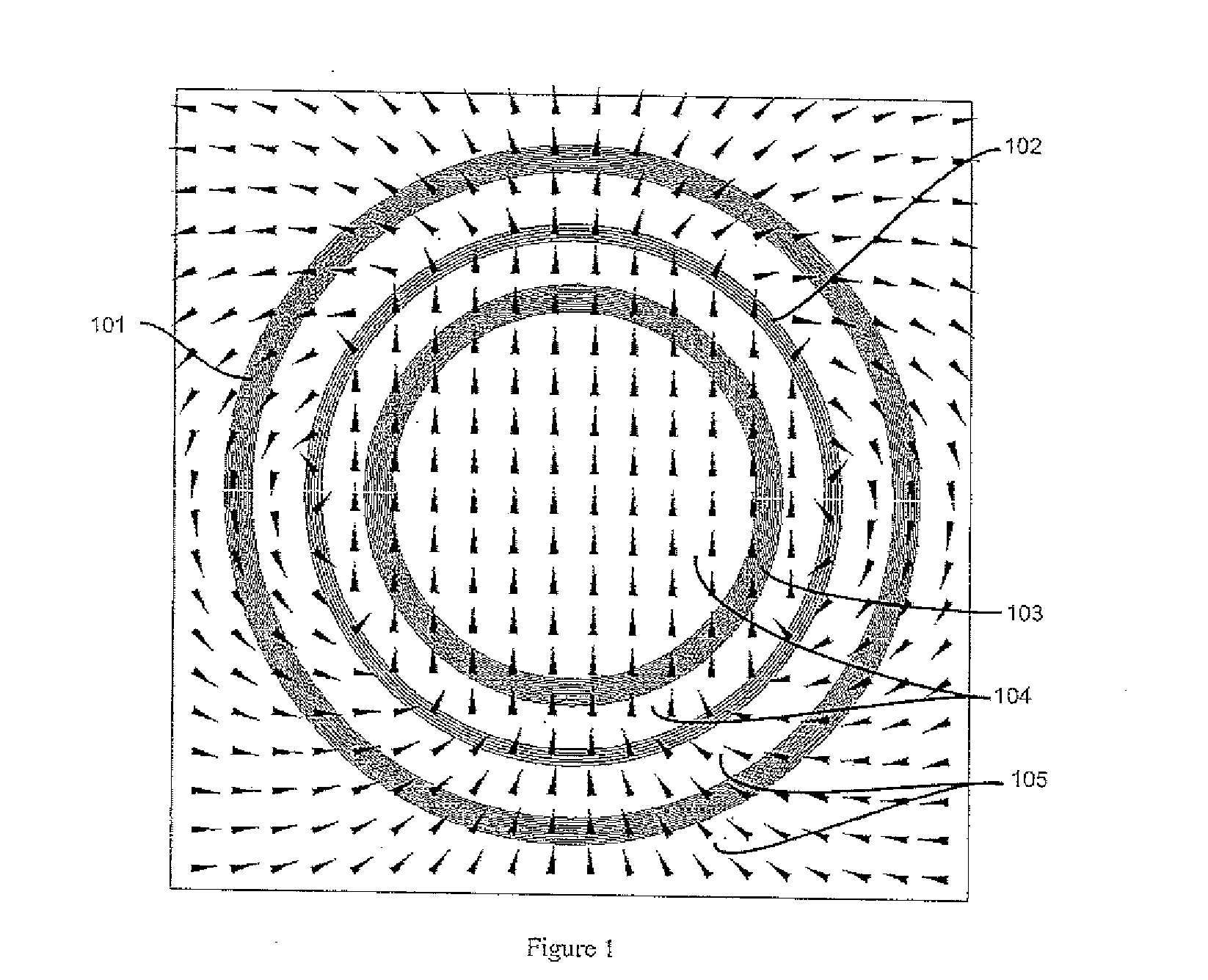Dual Armature Motor/Generator With Flux Linkage
a technology of electric motors and generators, applied in the direction of windings, mechanical devices, superconductor devices, etc., can solve the problems of “wasted flux” and the inability of machines to produce power at low voltage and high current, so as to increase the overall electrical efficiency, reduce the mass of the machine, and increase the power density
- Summary
- Abstract
- Description
- Claims
- Application Information
AI Technical Summary
Benefits of technology
Problems solved by technology
Method used
Image
Examples
Embodiment Construction
[0037]The preferred embodiment of this invention is a 2-pole machine that contains a rotating armature with three 2-pole coils in each of the two concentric rotor sections, that are placed in an external multi-pole field of order N=2 created by a stationary superconducting field coil. The three armature coils of each rotor section are oriented such that the spatial angles of their magnetic axes are 120° apart and the respective coils in each armature section are connected in series so the generated voltages in the coils of the two sections are added. Other embodiments of this machine can be made with four and more pole configurations for both the rotor and field coils.
[0038]As set forth in the present invention, the armature of a machine consists of two separate sets of coils, one set placed in the aperture of the field source to link flux inside the field source and the other set placed outside the field source to link with the flux external to the field source, which results in ap...
PUM
 Login to View More
Login to View More Abstract
Description
Claims
Application Information
 Login to View More
Login to View More - R&D
- Intellectual Property
- Life Sciences
- Materials
- Tech Scout
- Unparalleled Data Quality
- Higher Quality Content
- 60% Fewer Hallucinations
Browse by: Latest US Patents, China's latest patents, Technical Efficacy Thesaurus, Application Domain, Technology Topic, Popular Technical Reports.
© 2025 PatSnap. All rights reserved.Legal|Privacy policy|Modern Slavery Act Transparency Statement|Sitemap|About US| Contact US: help@patsnap.com



